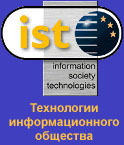
|
Semiconductor Processing by imprint of ultrasmall patterns
-
Project Acronym
-
SPINUP
-
Title
-
Semiconductor Processing by imprint of ultrasmall patterns
-
Subject Index Code
-
Electronics, Microelectronics; Information Processing, Information Systems
-
Other Indexes
-
MEL-ARI Nano-Scale ICs; imprinting
-
Objective
-
The project aims to study and develop new technologies for mechanical pattern transfer in the sub-100 nm regime, in order to replace conventional lithography
in semiconductor mass production. Mechanical imprint into plastic polymers or printing with inks forming self-assembled monolayers will be the centre of interest.
Given the wide range of possible applications of the novel technology, and the importance of cross-fertilisation between several subfields, we have defined four main
objectives, encompassing the scope of the novel technology in electronics and quantum-electronics:
-
To develop and optimise a manufacturing technology for imprint masters as well as for rubber master stamps, employing state-of-the-art high resolution e-beam
lithography and innovative resist and etching technologies, allowing resolutions down to 10 nm.
-
to investigate and create new alignment technologies necessary for multilayer processing suitable for existing and future semiconductor mass production.
-
to introduce imprint technology into device production by defining completely new concepts for demonstrators like electrostatically defined quantum point contacts and
room temperature coulomb blockade devices which are both based on multilayer processes.
-
to assess the new technology in comparison to existing lithography techniques like X-ray or e-beam lithography, looking as well at resolution, possible alignment, and
throughput as at cost and reliability in mass production.
-
General Information
-
The present proposal is based on a combination of the in-depth knowledge of chemical research groups active in polymer chemistry and in
self-assembled monolayers with the expertise, present in academic and industrial research, in fabrication and characterisation of electronic nanostructures. It combines
ambitious targets in the field of ultra high resolution printing, with applications in ultra high density electronics and quantum-electronics.
To reach the targets, two different ways of mechanical pattern transfer will be developed and applied to test device fabrication:
-
Replication by imprint in polymers, based on pressing a negative mold into polymer layers. The polymer pattern can be used for subsequent processing, like a resist
structure patterned by standard lithography. In addition, the use of the resist patterns as part of the device structure (gate isolation) will be investigated
-
Replication by printing with inks forming self-assembled monolayers. A stamp consisting of an elastomer is covered by an ink, which is able to form a self-assembled
monolayer after being printed on the substrate. This monolayer then serves as a mask for further processing by etching or surface reaction.
..
-
The microcontact imprinting and inking techniques thus developed should allow for high throughput pattern transfer over a large area, and with a resolution down to 10 nm.
Together with new alignment technologies this would allow for the replacement of conventional and e-beam lithography in future ULSI semiconductor processing.
-
Industrial relevance
-
For the future of the nanoelectronics industry the availability of a technology that allows for a mass-production of devices containing details in the range of 10 nm is of prime
importance. Design rules in this range can be anticipated to hold sway around the year of 2010. Presently structures of these dimensions can only be fabricated using
direct writing techniques, implying low throughput, and it is not probable that optical lithography can be upgraded to the appropriate resolution. Thus it is necessary to
search for new ways of parallel pattern transfer for the desired structure size which can be found in printing and imprinting on the nanometer scale.
-
Programme
-
ESPRIT 4
-
Partners
-
|
GERMANY
|
RWTH Aachen
|
Coordinator
|
|
NETHERLANDS
|
Technische Universiteit Eindhoven
|
Partner
|
|
GERMANY
|
Universität Würzburg
|
Partner
|
|
FRANCE
|
CNRS - L2M
|
Partner
|
|
NETHERLANDS
|
Universiteit Twente
|
Partner
|
|
RUSSIAN FEDERATION
|
Russian Academy of Science
Institute of Microelectonics Technology
|
Partner
|
|
 CORDIS RTD-PROJECTS/© European Communities, 1998
CORDIS RTD-PROJECTS/© European Communities, 1998
|











 CORDIS RTD-PROJECTS/© European Communities, 1998
CORDIS RTD-PROJECTS/© European Communities, 1998